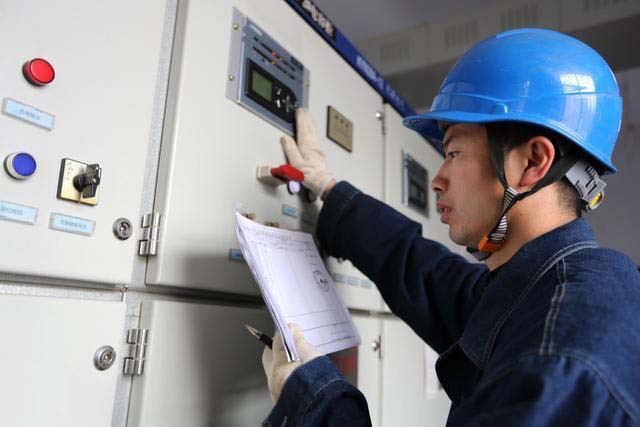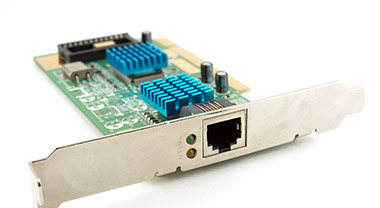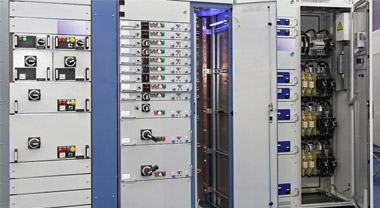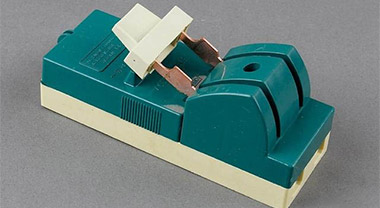Operating overvoltage of vacuum circuit breaker
The operating over-voltages of vacuum circuit breakers mainly include blocking over-voltage, reignition high-frequency over-voltage, thumping through voltage, bounce-over voltage and so on. The interception overvoltage and the reignition overvoltage are generally generated when the inductive load is opened and closed; the thumping through voltage and the bounce overvoltage are generally generated when the capacitive load is opened and closed.
1. Cut over voltage
When the vacuum circuit breaker interrupts the AC current, due to its extremely strong arc extinguishing ability, the arc is extinguished before the current reaches the natural zero point and the current is forcibly cut off. This is the current interception phenomenon. Because the current is quickly cut off, the magnetic field energy of the inductive load is converted into electric field energy, causing the overvoltage to be cut off. When the inlet capacitance of the equipment is smaller, the overvoltage multiple will be higher, which will have extremely adverse effects on the insulation of the system and equipment.
The cut-off level of the vacuum circuit breaker mainly depends on the material used in the contact electrode of the circuit breaker. At present, the interception level of CuCr contact material widely used in various countries is about 5A.
The interception level of the vacuum circuit breaker also determines the magnitude of the interception overvoltage. In addition, the nature of the opening and closing load of the vacuum circuit breaker also has a great influence on the intercepting overvoltage by the length of the connecting cable.
The smaller the load, the more inductive the component is. Therefore, the greater the magnetic energy stored in the inductor at the moment of current cutoff, the smaller the inlet capacitance of the load being cut off, the higher the degree of cut-off overvoltage generated by the conversion of magnetic energy into electric field energy.
The longer the cable attached to the disconnected load, the greater the capacitance, and therefore the lower the overvoltage. When the cable length exceeds a certain value, the intercepted over-voltage can be limited to the allowable value of the system (3.2 times the maximum phase voltage amplitude). As long as the cable length exceeds 200m (the total capacitance to ground is about 0.1µF and above), all types of loads that break the distribution transformer will not generate overvoltage levels that exceed the allowable levels of equipment and systems.

2. Cut-off overvoltage in case of reignition
The above analysis of the intercepted overvoltage does not take into account the reignition of the vacuum circuit breaker. If the interception occurs shortly after the contacts are separated, the high-frequency oscillation process caused by the interception will increase the recovery voltage between the contacts of the vacuum circuit breaker at a very fast rate. Because the contact distance is very small at this time, it is easy to be broken down and reignite occurs.
During reignition, a high-frequency oscillation process occurs on the load side and the power supply side. A large high-frequency current will flow in the gap. After the high-frequency current crosses zero and extinguishes the arc, if the energy stored on the load is large enough, it will be transformed into Overvoltage causes the contact gap to breakdown again. This is repeated many times until the recovery strength of the medium between the contacts is sufficiently high, and the generated overvoltage can no longer cause the gap to break down, and the circuit is finally broken. Therefore, the overvoltage characteristic that determines this situation will no longer be entirely determined by the intercept value, and it also includes the dielectric recovery strength characteristics of the vacuum gap.
Generally speaking, due to the effect of reignition, part of the energy stored in the load inductance is returned to the power supply side, which reduces the intercepted over-voltage. This is because, on the one hand, the contact reignition is equivalent to a pressure-limiting gap action; on the other hand, in the process of multiple reignition, due to the continuous reduction of energy in the oscillating circuit, the overvoltage amplitude decreases.
In particular, although reignition can reduce the amplitude of the intercepted overvoltage, high-frequency oscillations will occur during the reignition of the vacuum circuit breaker, resulting in high-frequency overvoltage. The frequency of high-frequency overvoltage generated by reignition is very high when the cable length is short. Even if the amplitude of such high frequency overvoltage is not large, it is still harmful to the longitudinal insulation of the transformer. Therefore, for transformers with relatively weak insulation (such as long-running transformers, dry-type insulating transformers, etc.), it is necessary to limit the frequency of reignition overvoltage.
Calculation and analysis show that extending the length of the connecting cable can effectively reduce the frequency of reignition overvoltage. The effect of paralleling capacitors on the load side is the same as extending the length of the cable. It will slow down the steepness of the leading edge of the overvoltage. Therefore, for transformers with relatively weak insulation, when the connecting cable is short, a capacitor should be connected in parallel at the high-voltage end of the transformer to reduce the frequency of reignition overvoltage. The typical value can be 0.1-0.2µF. It is particularly important to note that MOA is very effective for limiting the amplitude of the intercepted overvoltage, but it cannot limit the high frequency of the reignition overvoltage.
3. Operating overvoltage when switching off the high-voltage motor
The vacuum circuit breaker breaks the high-voltage motor and also breaks the inductive load. Especially when the starting current of the motor is switched off, the starting current is very large, causing the relay protection action. The circuit breaker disconnects the motor and the rotor winding speed is close to zero. The electromagnetic transient process is similar to the short circuit of the secondary side of the transformer, and the rotor winding is equivalent. For short-circuited transformer secondary windings, the starting current in the stator windings is usually 5 to 7 times the rated current, and the cut-off value of the circuit breaker is very large, so the cut-off overvoltage of the motor in the breaking state will be much greater than the no-load cut Electric motor. It also often happens that the insulation breakdown between the windings of the motor due to multiple reignition overvoltages.
This is because the multiple reignition overvoltage is a high frequency overvoltage with a high frequency, which can reach several hundred kilohertz to several megahertz. High-amplitude high-frequency overvoltage not only seriously threatens the main insulation of the motor, but also poses a serious hazard to the insulation between windings.




